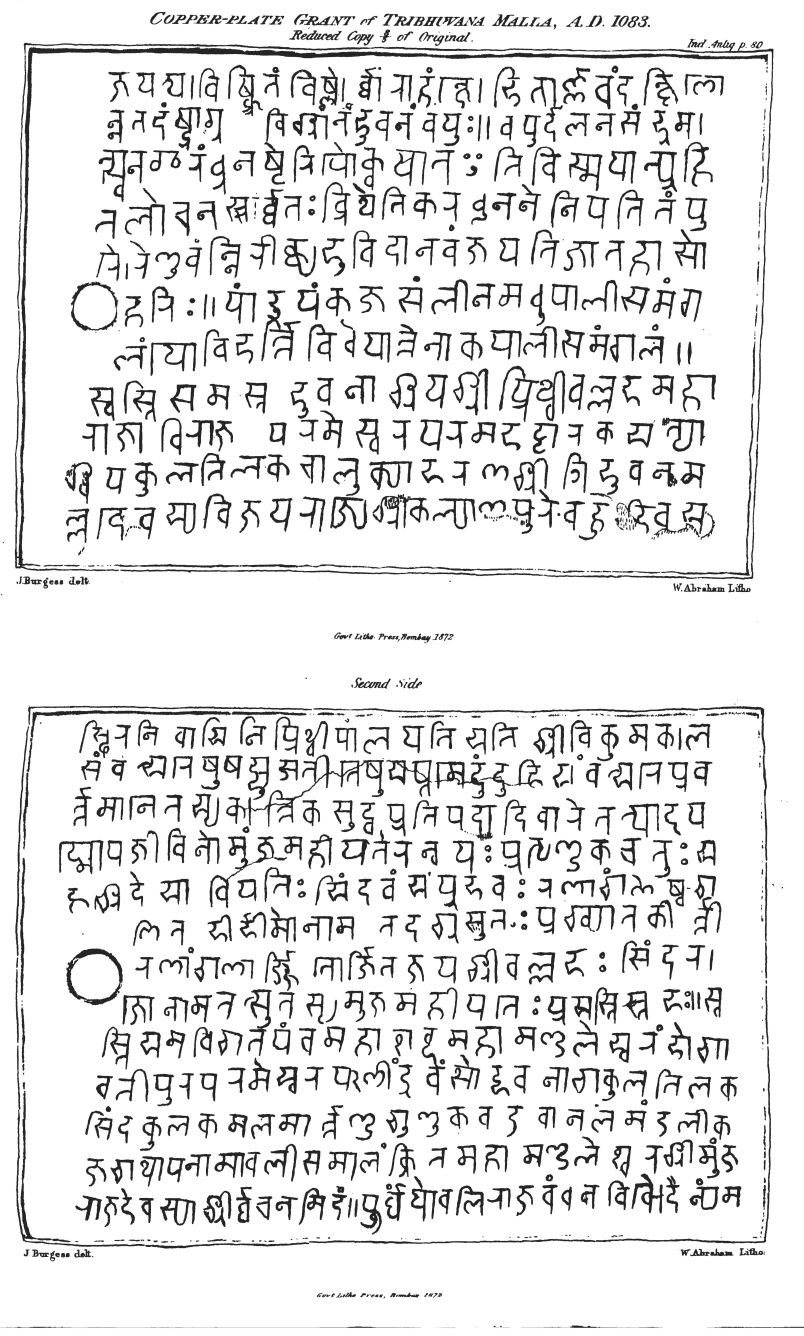|
Manusmriti
The ''Manusmṛti'' (), also known as the ''Mānava-Dharmaśāstra'' or the Laws of Manu, is one of the many legal texts and constitutions among the many ' of Hinduism. Over fifty manuscripts of the ''Manusmriti'' are now known, but the earliest discovered, most translated, and presumed authentic version since the 18th century is the "Kolkata (formerly Calcutta) manuscript with Kulluka Bhatta commentary". Modern scholarship states this presumed authenticity is false, and that the various manuscripts of ''Manusmriti'' discovered in India are inconsistent with each other. The metrical text is in Sanskrit, is dated to the 2nd century BCE to 2nd century CE, and presents itself as a discourse given by Manu (Svayambhuva) and Bhrigu on dharma topics such as duties, rights, laws, conduct, and virtues. The text's influence had historically spread outside India, influencing Hindu kingdoms in modern Cambodia and Indonesia. In 1776, ''Manusmriti'' became one of the first Sanskrit texts ... [...More Info...] [...Related Items...] OR: [Wikipedia] [Google] [Baidu] |
Dharmaśāstra
''Dharmaśāstra'' () are Sanskrit Puranic Smriti texts on law and conduct, and refer to treatises (shastras, śāstras) on Dharma. Like Dharmasūtra which are based upon Vedas, these texts are also elaborate law commentaries based on vedas, Dharmashastra themselves evolved from dharmshutra. There are many Dharmashastras, variously estimated to number from 18 to over 100. Each of these texts exists in many different versions, and each is rooted in Dharmasutra texts dated to the 1st millennium BCE that emerged from Kalpa (Vedanga) studies in the Vedic era. The textual corpus of Dharmaśāstra were composed in poetic verse, and are part of the Hindu Smritis, constituting divergent commentaries and treatises on ethics particularly duties, and responsibilities to oneself and family as well as those required as a member of society. The texts include discussion of Ashrama (stage), ashrama (stages of life), varna (Hinduism), varna (social classes), Puruṣārtha, purushartha (proper g ... [...More Info...] [...Related Items...] OR: [Wikipedia] [Google] [Baidu] |
Hindu Law
Hindu law, as a historical term, refers to the code of laws applied to Hindus, Buddhists, Jains and Sikhs in British India. Hindu law, in modern scholarship, also refers to the legal theory, jurisprudence and philosophical reflections on the nature of law discovered in ancient and medieval era Indian texts. It is one of the oldest known jurisprudence theories in the world and began three thousand years ago whose original sources were the Hindu texts. Hindu tradition, in its surviving ancient texts, does not universally express the law in the canonical sense of '' ius'' or of '' lex''. The ancient term in Indian texts is Dharma, which means more than a code of law, though collections of legal maxims were compiled into works such as the Nāradasmṛti. The term "Hindu law" is a colonial construction, and emerged after the colonial rule arrived in Indian Subcontinent, and when in 1772 it was decided by British colonial officials, that European common law system would not be implem ... [...More Info...] [...Related Items...] OR: [Wikipedia] [Google] [Baidu] |
Śūdra
Shudra or ''Shoodra'' (Sanskrit: ') is one of the four varnas of the Hindu class and social system in ancient India. Some sources translate it into English as a caste, or as a social class. Theoretically, Shudras constituted a class like workers. According to Richard Gombrich's study of Buddhist texts, particularly relating to castes in Sri Lankan Buddhist and Tamil Hindu society, The word ''Shudra'' appears in the ''Rigveda'' and it is found in other Hindu texts such as the ''Manusmriti'', ''Arthashastra'', dharmaśāstras and jyotiḥśāstras. In some cases, Shudras participated in the coronation of kings, or were amatya "ministers" and rajas "kings" according to early Indian texts. History Vedas The term ''śūdra'' appears only once in the ''Rigveda''. This mention is found in the mythical story of creation embodied in the '' Puruṣasuktam''. It describes the formation of the four varnas from the body of a primeval man. It states that the brahmin emerged from his ... [...More Info...] [...Related Items...] OR: [Wikipedia] [Google] [Baidu] |
Dharma
Dharma (; , ) is a key concept in various Indian religions. The term ''dharma'' does not have a single, clear Untranslatability, translation and conveys a multifaceted idea. Etymologically, it comes from the Sanskrit ''dhr-'', meaning ''to hold'' or ''to support'', thus referring to law that sustains things—from one's life to society, and to the Universe at large. In its most commonly used sense, dharma refers to an individual's moral responsibilities or duties; the dharma of a farmer differs from the dharma of a soldier, thus making the concept of dharma a varying dynamic. As with the other components of the Puruṣārtha, the concept of ''dharma'' is pan-Indian. The antonym of dharma is ''adharma''. In Hinduism, ''dharma'' denotes behaviour that is considered to be in accord with ''Ṛta''—the "order and custom" that makes life and universe possible. This includes duties, rights, laws, conduct, virtues and "right way of living" according to the stage of life or social posi ... [...More Info...] [...Related Items...] OR: [Wikipedia] [Google] [Baidu] |
Hinduism
Hinduism () is an Hypernymy and hyponymy, umbrella term for a range of Indian religions, Indian List of religions and spiritual traditions#Indian religions, religious and spiritual traditions (Sampradaya, ''sampradaya''s) that are unified by adherence to the concept of ''dharma'', a Ṛta, cosmic order maintained by its followers through rituals and righteous living, as expounded in the Vedas. The word ''Hindu'' is an exonym, and while Hinduism has been called the oldest religion in the world, it has also been described by the modern term ''Sanātana Dharma'' () emphasizing its eternal nature. ''Vaidika Dharma'' () and ''Arya dharma'' are historical endonyms for Hinduism. Hinduism entails diverse systems of thought, marked by a range of shared Glossary of Hinduism terms, concepts that discuss God in Hinduism, theology, Hindu mythology, mythology, among other topics in Hindu texts, textual sources. Hindu texts have been classified into Śruti () and Smṛti (). The major Hin ... [...More Info...] [...Related Items...] OR: [Wikipedia] [Google] [Baidu] |
Artha
''Artha'' (; ; Pali: Attha, Tamil: பொருள், poruḷ) is one of the four goals or objectives of human life in Hindu traditions.James Lochtefeld (2002), The Illustrated Encyclopedia of Hinduism, Rosen Publishing, New York, , pp 55–56 It includes career, skills, health, wealth, prosperity and the means or resources needed for a fulfilling life. The word ''artha'' literally translates as "meaning, sense, goal, purpose or essence" depending on the context. Artha is also a broader concept in the scriptures of Hinduism, Buddhism and Jainism. As a concept, it has multiple meanings, all of which imply "means of life", activities and resources that enable one to be in a state one wants to be in.John Koller, Puruṣārtha as Human Aims, Philosophy East and West, Vol. 18, No. 4 (Oct., 1968), pp. 315–319 Artha applies to both an individual and a government. In an individual's context, ''artha'' includes wealth, career, activity to make a living, financial security and economic ... [...More Info...] [...Related Items...] OR: [Wikipedia] [Google] [Baidu] |
Manu (Hinduism)
Manu () is a term found with various meanings in Hinduism. In early texts, it refers to the archetypal man, or the first man ( progenitor of humanity). The Sanskrit term for 'human', मनुष्य (IAST: manuṣya) or मानव (IAST: mānava) means 'of Manu' or 'children of Manu'. In later texts, Manu is the title or name of fourteen rulers of earth, or alternatively as the head of dynasties that begin with each cyclic '' kalpa'' (aeon) when the universe is born anew. The title of the text ''Manusmriti'' uses this term as a prefix, but refers to the first Manu – Svayambhuva, the spiritual son of Brahma. In the Hindu cosmology, each ''kalpa'' consists of fourteen Manvantaras, and each Manvantara is headed by a different Manu. The current universe, is asserted to be ruled by the 7th Manu named Vaivasvata. Vaivasvata was the king of Dravida before the great flood. He was warned of the flood by the Matsya (fish) avatar of Vishnu, and built a boat that carried the Vedas, ... [...More Info...] [...Related Items...] OR: [Wikipedia] [Google] [Baidu] |
Bhrigu
Bhrigu (, ) is a rishi in Hindu tradition. He is one of the seven great sages, the Saptarshis, and one of the many Prajapatis (the facilitators of creation) created by Brahma. He was the first compiler of predictive astrology and also the author of '' Bhrigu Samhita'', an astrological ( jyotisha) classic. Bhrigu is considered a manasaputra ("mind-born son") of Brahma. The adjectival form of the name, '' Bhārgava'', is used to refer to the descendants and the school of Bhrigu. According to ''Manusmriti'', Bhrigu was a compatriot and companion of Svāyambhuva Manu, the progenitor of humanity. Along with Manu, Bhrigu made important contributions to the ''Manusmṛti'', which was constituted out of a sermon to a congregation of saints in the state of Brahmavarta, after the great floods in this area. As per the ''Skanda Purana'', Bhrigu migrated to Bhrigukaccha, modern Bharuch, on the banks of the Narmada river in Gujarat, leaving his son Chyavana at Dhosi Hill. According to ... [...More Info...] [...Related Items...] OR: [Wikipedia] [Google] [Baidu] |
Ahimsa
(, IAST: , ) is the ancient Indian principle of nonviolence which applies to actions towards all living beings. It is a key virtue in Indian religions like Jainism, Buddhism and Hinduism. (also spelled Ahinsa) is one of the cardinal virtues of Jainism, where it is the first of the Jain Ethics, Pancha Mahavrata. It is also one of the central precepts of Hinduism and is the first of the five precepts of Buddhism. is inspired by the premise that all living beings have the spark of the divine spiritual energy; therefore, to hurt another being is to hurt oneself. is also related to the notion that all acts of violence have Karma, karmic consequences. While ancient scholars of Brahmanism had already investigated and refined the principles of , the concept reached an extraordinary development in the ethical philosophy of Jainism. Mahavira, the twenty-fourth and the last of Jainism, further strengthened the idea in . About , Valluvar emphasized and Ethics of eating meat, m ... [...More Info...] [...Related Items...] OR: [Wikipedia] [Google] [Baidu] |
Brahmin
Brahmin (; ) is a ''Varna (Hinduism), varna'' (theoretical social classes) within Hindu society. The other three varnas are the ''Kshatriya'' (rulers and warriors), ''Vaishya'' (traders, merchants, and farmers), and ''Shudra'' (labourers). The traditional occupation of Brahmins is that of priesthood (purohit, pandit, or pujari) at Hindu temples or at socio-religious ceremonies, and the performing of rite of passage rituals, such as solemnising a wedding with hymns and prayers.James Lochtefeld (2002), Brahmin, The Illustrated Encyclopedia of Hinduism, Vol. 1: A–M, Rosen Publishing, , page 125 Traditionally, Brahmins are accorded the supreme ritual status of the four social classes, and they also served as spiritual teachers (guru or acharya). In practice, Indian texts suggest that some Brahmins historically also became agriculturalists, warriors, traders, and had also held other occupations in the Indian subcontinent.GS Ghurye (1969), Caste and Race in India, Popular Prakasha ... [...More Info...] [...Related Items...] OR: [Wikipedia] [Google] [Baidu] |
Shastra
''Śāstra'' ( ) is a Sanskrit word that means "precept, rules, manual, compendium, book or treatise" in a general sense.Monier Williams, Monier Williams' Sanskrit-English Dictionary, Oxford University Press, Article on 'zAstra'' The word is generally used as a suffix in the Indian literature context, for technical or specialized knowledge in a defined area of practice. ''Śāstra'' has a similar meaning to English ''-logy'', e.g. ecology, psychology, meaning scientific and basic knowledge on a particular subject. Examples in terms of modern neologisms include # 'physics', # 'chemistry', # 'biology', # 'architectural science', # 'science of mechanical arts and sculpture', # 'science of politics and economics', and # 'compendium of ethics or right policy'. In Western literature, ''Śāstra'' is sometimes spelled as Sastra, reflecting a misunderstanding of the IAST symbol 'ś', which corresponds to the English 'sh'. Etymology The word ''Śāstra'' literally means ... [...More Info...] [...Related Items...] OR: [Wikipedia] [Google] [Baidu] |




